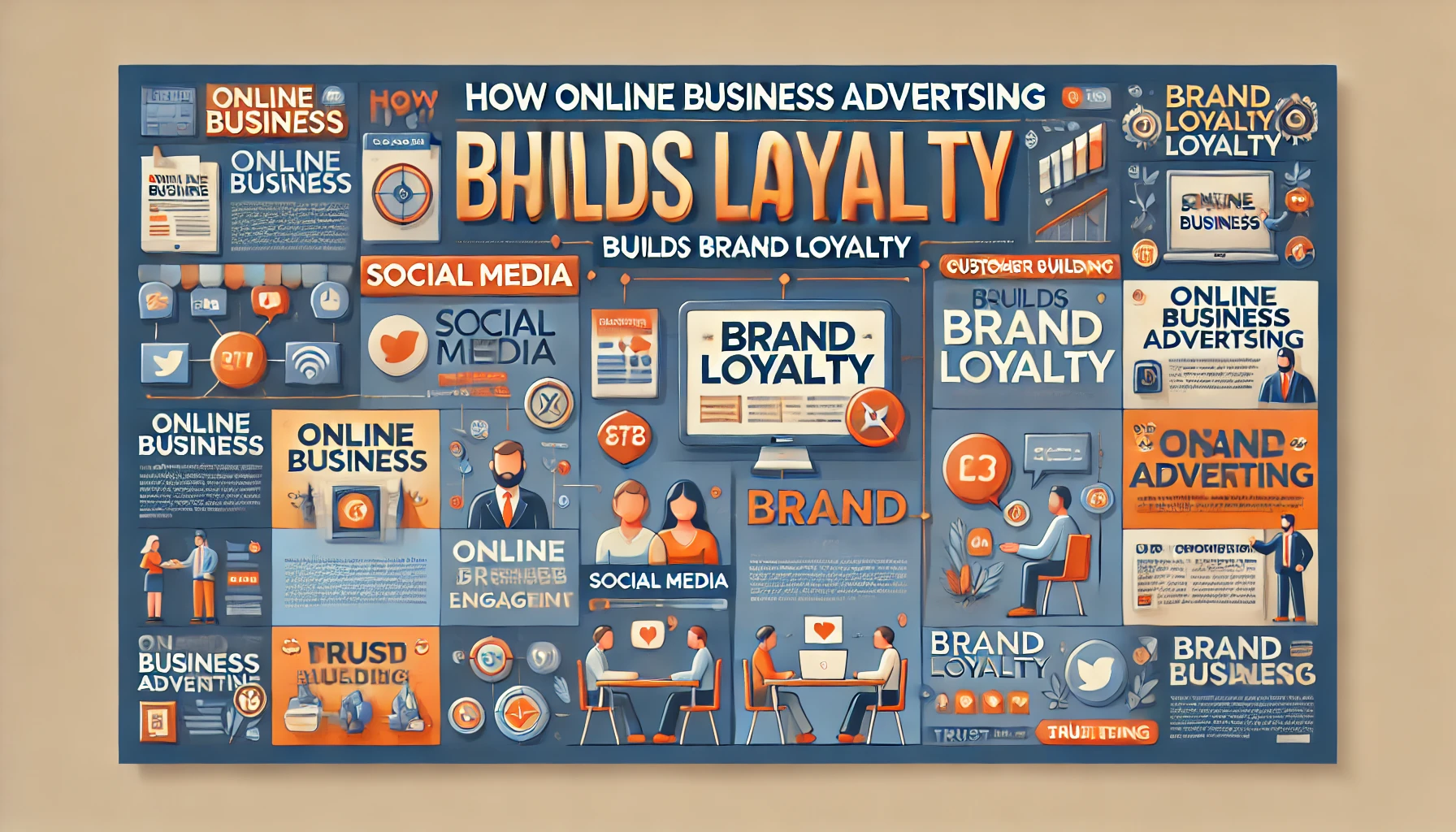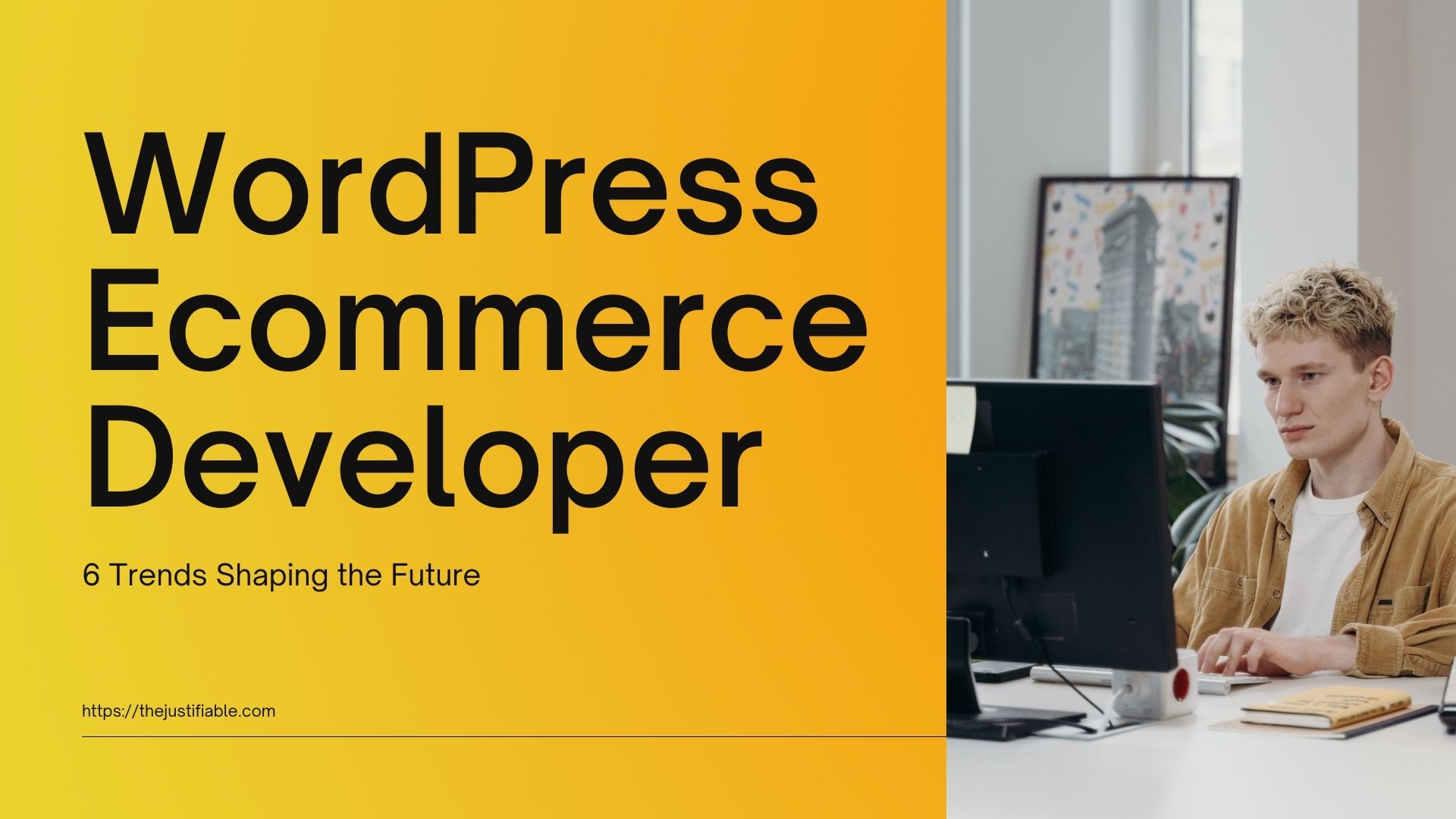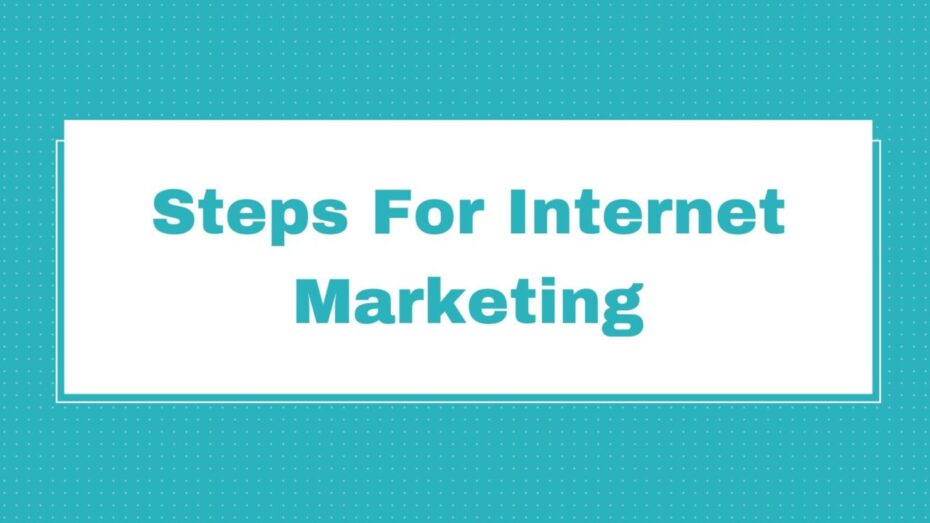Table of Contents
What makes online business advertising essential for brand loyalty? This article dives into practical strategies to show how advertising fosters brand trust and loyalty.
Understanding Online Business Advertising
Online business advertising plays a pivotal role in building brand loyalty. It’s all about strategically reaching your audience with messages that resonate, establishing a presence that customers recognize and trust, and nurturing lasting relationships.
The Role of Online Advertising in Building Loyalty
Online advertising goes beyond promotion—it’s a means of connecting deeply with customers. Each ad serves as a touchpoint, reinforcing brand values and staying in the minds of your audience. I suggest prioritizing ads that focus on authenticity.
Every well-crafted ad helps build trust, and trust breeds loyalty. When customers see an ad that aligns with their values, they’re more likely to form a positive bond. I advise making sure each ad speaks directly to your audience’s needs and interests.
Repetitive, reliable messaging is key. Consumers feel comforted by consistency; it creates a sense of familiarity and reliability. When ads maintain a cohesive tone and visual style, they subtly strengthen customer relationships over time.
Consider each ad as part of a larger conversation with your audience. Whether it’s a quick promotional spot or a more in-depth campaign, every ad reinforces brand values, allowing customers to feel connected and loyal.
Key Channels for Effective Brand Advertising
Effective brand advertising requires choosing the right channels. I suggest focusing on platforms where your audience spends the most time, such as social media, email, and search engines, to maximize engagement and loyalty.
Social media channels, like Instagram and Facebook, offer interactive ways to connect. Visual platforms help build brand loyalty as they allow you to engage directly with users. I recommend sharing user-generated content and testimonials on social to enhance trust.
Email marketing is another powerful tool. Direct communication through email provides a personal touch, allowing you to share exclusive offers or updates. I find that personalized emails show customers they’re valued, encouraging loyalty.
Search engine ads capture high-intent audiences actively looking for solutions. I advise crafting ads that directly address common pain points or needs. Targeted keywords help ensure you’re reaching people ready to engage with your brand.
Major Trends Impacting Advertising Success
Advertising success is often influenced by emerging trends. Personalization continues to lead, with tailored messages making customers feel seen. I believe this focus on personalization fosters genuine, long-lasting loyalty.
Video content is another major trend. Engaging video ads grab attention quickly and offer dynamic storytelling opportunities. I suggest integrating video formats into campaigns, as they’re proven to drive stronger viewer engagement and brand recall.
Interactive ads also rise in popularity. Polls, quizzes, and other interactive formats captivate users and make them feel part of the brand. I recommend trying these formats to increase engagement and deepen customer loyalty.
Privacy-focused advertising is gaining traction too. With rising concerns over data privacy, transparent practices make customers feel respected. This transparency builds trust, which I find essential for long-term loyalty.
How Advertising Connects to Brand Loyalty
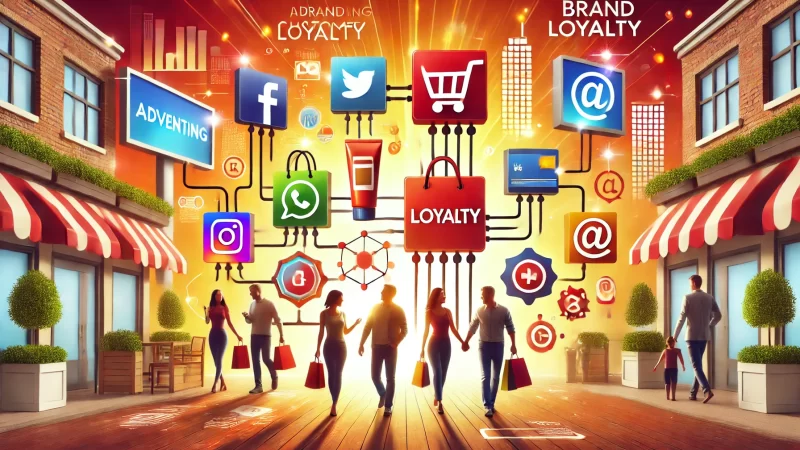
Advertising is a bridge that links brands to their customers, fostering loyalty through consistent engagement. Strategic, thoughtful ads make brands memorable, trustworthy, and reliable—three qualities that help build enduring customer loyalty.
Shaping Consumer Perception with Targeted Ads
Targeted ads shape how customers perceive your brand. Each ad should align with the brand’s values to make an impression. I suggest aiming for authenticity in ad messaging to build trust and credibility with your audience.
Ads can highlight aspects of your brand that resonate with specific groups. I recommend customizing your message based on your target demographic to ensure it speaks to their unique needs and preferences. This approach deepens connection and loyalty.
Highlighting brand strengths in ads, like sustainability or innovation, reinforces customer trust. Each ad that aligns with customer values serves as a reminder that your brand is worth their loyalty. I believe consistency in these values strengthens bonds.
Audience-focused ads don’t just sell—they engage. When customers feel that an ad truly “gets” them, they’re more likely to feel positive about the brand. I advise focusing on ads that mirror the customer’s lifestyle, enhancing relatability.
Building Trust with Consistent Brand Messages
Consistency is vital for building trust in advertising. Every ad should echo the same core message, ensuring a unified brand voice that customers recognize and trust. I recommend setting a clear brand tone and sticking with it for all campaigns.
A consistent message reduces confusion and makes your brand feel stable. Each ad reinforces previous ones, making your brand a reliable part of the customer’s experience. I believe this reliability fosters a sense of loyalty among audiences.
Visual consistency is also key. Whether it’s colors, logos, or fonts, keeping visuals uniform across ads strengthens brand recall. I find that recognizable visuals help customers feel familiar with your brand, enhancing loyalty.
Consistent messaging shows integrity. It demonstrates that your brand stands firm in its values and promises, which I believe appeals to customers looking for reliability and trustworthiness in their chosen brands.
Emotional Engagement as a Loyalty Driver
Emotional engagement is a powerful driver of loyalty. Ads that evoke positive emotions connect with customers on a personal level. I suggest aiming for messages that inspire, comfort, or entertain to create a memorable impact.
Brands can forge strong bonds by appealing to feelings like happiness, nostalgia, or belonging. When an ad resonates emotionally, it becomes memorable. I advise focusing on relatable stories or imagery to amplify this connection.
Authentic storytelling within ads makes a difference. Personal, relatable stories give customers a reason to care about your brand. I recommend sharing real customer testimonials or success stories that highlight the impact of your product or service.
Emotionally resonant ads are more likely to be shared, furthering reach and loyalty. Customers who feel a personal connection to your brand are more likely to recommend it to others. I find this word-of-mouth aspect invaluable for long-term loyalty.
Strategies for Boosting Loyalty Through Advertising
To foster brand loyalty, it’s essential to leverage targeted advertising strategies. Each tactic can strengthen customer bonds, encouraging loyalty and repeat engagement. I suggest exploring these methods to create deeper, lasting connections with your audience.
Using Personalization to Build Stronger Bonds
Personalization is powerful for brand loyalty. When customers see tailored messages, they feel understood. I recommend using data to customize ad content that aligns with their interests, making the interaction feel more meaningful and engaging.
Ads that reflect individual preferences foster a sense of connection. For instance, personalized offers based on past purchases can increase engagement. I suggest focusing on relevant recommendations to make each ad feel like it’s designed for them.
Dynamic content that adapts to user behavior can deepen trust. For example, location-based ads or seasonal recommendations can be highly effective. I believe this attention to detail strengthens the personal bond, reinforcing loyalty.
Avoid generic messaging. Instead, aim for language that speaks directly to your audience’s unique needs and experiences. I find that personalized content shows a brand truly values its customers, making them more inclined to remain loyal.
Social Proof and User-Generated Content for Trust
Social proof, such as testimonials and user content, reinforces trust. When customers see others sharing positive experiences, it validates their own choices. I suggest incorporating reviews in ads to boost credibility and encourage loyalty.
User-generated content (UGC) provides authenticity. Sharing real customer photos or stories in ads humanizes the brand. I believe UGC allows potential customers to connect with the brand on a more relatable level, enhancing trust and loyalty.
Testimonials strengthen your brand’s image. A single positive review can reassure potential customers about quality and reliability. I recommend showcasing these testimonials in various ad formats to highlight real, trusted opinions.
Engagement rates often increase with social proof. When customers feel they’re part of a loyal community, they’re more likely to stay. I advise featuring customer quotes or shoutouts in ads to foster a sense of belonging and loyalty.
Incorporating Loyalty Programs into Ad Campaigns
Loyalty programs offer incentives that keep customers coming back. Promoting these programs in ads can attract new members while reinforcing loyalty. I suggest highlighting benefits to make joining irresistible for potential customers.
Rewards build a sense of exclusivity. When customers feel valued, they engage more frequently. Consider showcasing perks like discounts or early access in ads to make loyalty programs appealing and encourage repeated purchases.
Loyalty programs create a mutual benefit. Customers appreciate rewards, and brands enjoy repeat business. I recommend emphasizing how easy it is to join, reassuring potential members that loyalty has tangible benefits for them.
Offering limited-time bonuses adds excitement. For instance, ads could mention double points during a sale, drawing customers in. I believe this approach not only boosts engagement but also builds a sense of long-term commitment to your brand.
Storytelling Techniques That Resonate with Audiences
Storytelling is an art that builds emotional bonds. Ads that tell a relatable story resonate deeply with customers, making the brand memorable. I suggest sharing real-life situations to make ads feel genuine and compelling.
Stories make brands feel human. By focusing on relatable experiences or struggles, ads can evoke empathy. I believe this personal touch strengthens customer loyalty, as they feel more connected to the brand’s narrative.
Relatable stories foster trust. When customers see themselves in a brand’s story, they’re more likely to engage. I advise creating narratives that reflect common goals or challenges, helping customers feel understood and valued.
Visual storytelling is effective. Using imagery or short videos to convey stories makes ads more engaging. I suggest using visuals that depict real customer journeys, showing how your brand positively impacts lives.
Measuring Loyalty Impact from Advertising Efforts
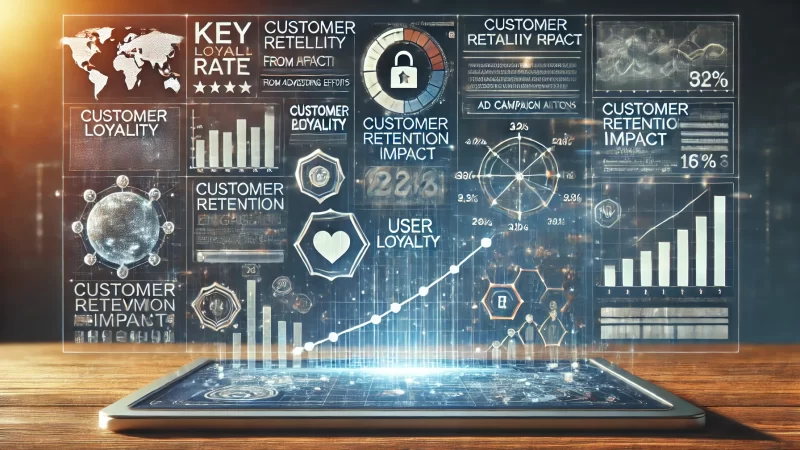
Measuring how advertising affects loyalty is crucial to understanding success. Tracking key metrics and customer feedback allows brands to refine strategies. I advise consistent monitoring to identify what resonates and drives loyalty effectively.
Key Metrics for Tracking Customer Engagement
Engagement metrics offer insight into customer loyalty. Metrics like click-through rates (CTR) and time spent on site reveal how ads impact users. I suggest regularly analyzing these indicators to gauge ad effectiveness in building loyalty.
Repeat purchase rates indicate loyalty. High repeat purchases often mean customers are satisfied. I believe monitoring this metric shows how well ads convert one-time buyers into loyal, returning customers.
Customer lifetime value (CLV) measures loyalty over time. CLV reflects the total value a customer brings. Tracking CLV helps assess if ads are fostering long-term relationships, allowing brands to adapt for better loyalty outcomes.
Social media interactions highlight loyalty. Comments, shares, and likes reflect customer engagement. I recommend leveraging these insights to refine future ads, as they indicate how deeply customers connect with the brand’s message.
Tools to Analyze Customer Reactions and Feedback
Various tools analyze how ads impact loyalty. Social media listening tools help monitor brand sentiment. I suggest using platforms that track mentions and reviews to understand how ads shape customer perceptions.
Surveys provide direct insights. Gathering feedback through short post-purchase surveys reveals customer satisfaction levels. I believe these insights are valuable for refining ad strategies and building stronger loyalty.
Analytics platforms, like Google Analytics, offer detailed engagement data. Tracking customer behavior across channels shows how ads drive loyalty. I advise using these tools to uncover patterns and areas for improvement.
Email analytics highlight open rates and click-throughs. Observing these stats shows how effectively email campaigns retain interest. I recommend leveraging this data to optimize future campaigns for higher engagement and loyalty.
Refining Ads Based on Audience Response
Refining ads ensures they stay relevant. Reviewing customer feedback allows for adjustments that align with evolving preferences. I suggest listening closely to customer needs to improve the appeal and effectiveness of future ads.
Testing different ad formats reveals what works best. A/B testing lets you compare elements like images and text. I advise experimenting with variations to learn which approach drives the most loyalty and engagement.
Customer responses indicate ad appeal. Analyzing comments, likes, or shares shows what resonates. I recommend focusing on high-performing elements, as this insight ensures ads are tailored to your audience’s interests.
Continuous refinement strengthens connections. As preferences shift, updating ads maintains engagement. I suggest staying proactive with adjustments to ensure customers feel the brand evolves with their needs, encouraging loyalty.
Overcoming Challenges in Advertising for Loyalty
Building brand loyalty through advertising comes with unique challenges. Navigating trust, authenticity, and evolving preferences requires thoughtful strategies. I recommend addressing these areas head-on to cultivate lasting loyalty and connect meaningfully with customers.
Earning Trust Amid Consumer Skepticism
Consumer skepticism is real, especially with so many brands vying for attention. To earn trust, I suggest prioritizing transparency. When customers feel they can trust your brand, they’re more inclined to remain loyal.
Honest messaging helps alleviate doubts. I advise avoiding exaggerated claims and instead focusing on authentic, reliable content. This builds credibility, showing customers your brand values integrity, which strengthens their loyalty over time.
Consistency in communication also reduces skepticism. When customers see aligned messaging across platforms, they feel reassured. I recommend using consistent language and tone to show your brand’s dependability, which encourages trust.
Listening to feedback builds trust. Acknowledging customer input—whether positive or negative—demonstrates commitment to their experience. I find that responsiveness fosters loyalty, as it shows you’re attentive to their concerns.
Finding the Right Balance Between Promotion and Authenticity
Balancing promotional content with authenticity is essential for loyalty. Excessive promotion can feel insincere, so I suggest focusing on genuine messaging that reflects the brand’s values and truly resonates with your audience.
Customers seek honest brands. Ads that offer real insights instead of heavy sales pitches are more likely to engage. I believe highlighting the product’s real benefits rather than overselling builds a stronger, more authentic connection.
Authentic storytelling enhances brand loyalty. Sharing brand history, values, or customer stories adds depth to ads. I recommend using relatable narratives that allow customers to see the real brand, encouraging a sense of trust and loyalty.
Less promotion, more value. When ads offer educational or insightful content, customers appreciate the value added without feeling pressured to buy. I suggest focusing on informative ads that build loyalty by prioritizing customer needs.
Adapting to New Trends in Consumer Preferences
Staying adaptable to consumer trends is crucial for loyalty. Preferences constantly evolve, and I suggest regularly updating your advertising approach to reflect these shifts and maintain a connection with your audience.
Keeping pace with preferences signals that your brand understands its customers. I recommend using trend analysis to shape campaigns that reflect what customers currently value, enhancing relevance and loyalty.
Brands that adapt to changes stay relevant. I believe showing flexibility, such as offering eco-friendly products or addressing social issues, builds a positive brand image, which resonates with loyal customers.
Regular audience feedback is invaluable. I advise actively listening to customer responses to understand shifts in preferences. This feedback allows you to adjust ads to better align with customer interests, fostering loyalty.
Future of Advertising and Brand Loyalty
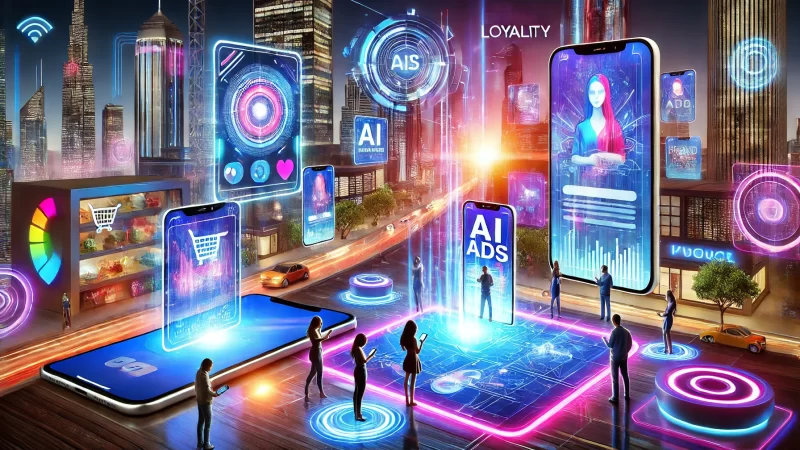
Advertising strategies are evolving with technology, paving the way for new methods to build loyalty. Leveraging advancements like AI and immersive formats will likely enhance brand loyalty, creating deeper engagement with customers.
AI-Driven Personalization for Enhanced Loyalty
AI enables a new level of personalization in advertising, fostering loyalty by tailoring content to individual preferences. I suggest incorporating AI tools to offer each customer a unique, engaging experience that speaks directly to them.
Predictive AI can anticipate needs, allowing for timely, relevant ads. I recommend using AI insights to refine ad targeting, so customers receive content that truly resonates, enhancing their connection to your brand.
Automation saves time and increases efficiency. AI can handle repetitive tasks, freeing you to focus on strategic decisions. I believe this streamlined process allows for consistent engagement, helping maintain customer loyalty.
AI-driven personalization offers new insights. Analyzing customer behavior reveals patterns that aid in creating loyal relationships. I suggest leveraging these insights to design ads that adapt to each customer’s journey, fostering loyalty.
Interactive and Immersive Ads to Strengthen Connection
Interactive ads engage audiences on a deeper level, making them feel involved with the brand. I recommend exploring formats like polls, quizzes, or augmented reality to capture attention and encourage loyalty.
Immersive experiences resonate more with users. Ads that incorporate virtual reality (VR) or augmented reality (AR) create memorable interactions. I believe these formats can leave a lasting impact, fostering a loyal customer base.
Interactive elements promote two-way engagement. When customers participate, they feel more invested. I advise using interactive features in ads to increase engagement and build a stronger emotional bond, which supports loyalty.
Immersive ads are more shareable. Creative, engaging ads encourage customers to spread the word. I suggest using shareable content that resonates with audiences, as this organic reach helps build a loyal community around your brand.
Data Privacy as a Cornerstone for Customer Trust
Data privacy remains critical for customer loyalty. Ensuring customers’ data is handled responsibly builds trust. I suggest being transparent about data usage and adhering to privacy standards to foster a secure relationship with customers.
Clear privacy policies reassure customers. Explaining how data is used shows your brand values transparency. I believe this openness strengthens trust, making customers more likely to remain loyal and comfortable with your brand.
Secure data handling practices are essential. Customers expect brands to protect their information. I recommend prioritizing data security in every ad campaign, as this assurance supports a trustworthy image and encourages loyalty.
Privacy-centric messaging reflects brand integrity. Highlighting privacy measures in ads shows respect for customer data. I find this approach not only builds loyalty but also positions your brand as one that values customer well-being.
Frequently Asked Questions (FAQs)
How does online advertising help build brand loyalty?
Online advertising builds loyalty by engaging customers, fostering trust, and reinforcing brand values through personalized and consistent messaging.
What role does personalization play in online advertising?
Personalization makes ads more relevant to individual customers, showing them that the brand understands their needs and preferences, which helps build loyalty.
Why is trust important in online business advertising?
Trust encourages customers to engage with and return to the brand, making it a cornerstone for loyalty. Honest messaging and consistent quality are key.
How does social proof impact brand loyalty?
Social proof, like user reviews or testimonials, boosts credibility, showing customers that others trust the brand, which enhances their likelihood to stay loyal.
What are the best channels for online advertising to boost loyalty?
Social media, email, and search engine ads are effective, as they allow direct and targeted engagement with audiences most likely to become loyal customers.
How can storytelling in ads enhance customer loyalty?
Storytelling makes ads relatable by connecting emotionally with customers, making them feel closer to the brand and more invested in its success.
What metrics are essential for tracking loyalty in online advertising?
Metrics like repeat purchase rate, customer lifetime value, and engagement on social media help gauge how effectively ads build loyalty.
How does emotional engagement contribute to brand loyalty?
Ads that evoke emotions help customers form a bond with the brand, making it more memorable and strengthening their loyalty.
Why is consistency important in online advertising for brand loyalty?
Consistent messaging and visuals make brands more recognizable and trustworthy, which are essential for building and maintaining customer loyalty.
What challenges do brands face in building loyalty through advertising?
Common challenges include consumer skepticism, balancing promotion with authenticity, and adapting to changing consumer preferences.
How does AI help with personalized online advertising?
AI enables brands to tailor ads based on customer behavior, making each interaction more relevant, which fosters a stronger loyalty connection.
Why is balancing promotion with authenticity important?
Customers are drawn to genuine brands. Overly promotional ads can feel insincere, so it’s crucial to focus on authentic messages that resonate with the audience.
What trends are shaping the future of online advertising for brand loyalty?
AI-driven personalization, interactive ads, and a focus on data privacy are current trends expected to impact loyalty-building efforts in the future.
How does data privacy impact customer loyalty in online advertising?
Ensuring data privacy builds customer trust, which is essential for loyalty, as customers feel safe engaging with brands that respect their information.
What are interactive ads, and how do they help build loyalty?
Interactive ads engage customers more directly, encouraging them to interact with the brand, which strengthens their connection and fosters loyalty.


